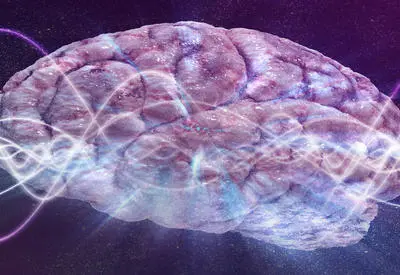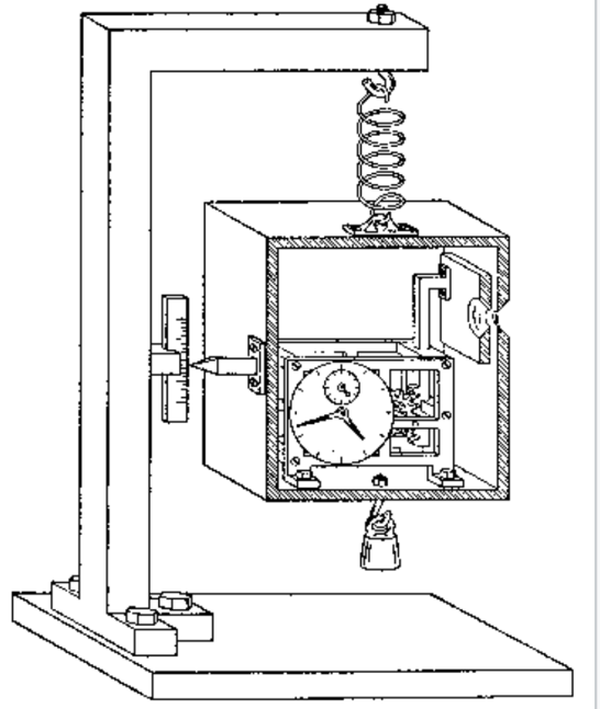Einstein’s dislike of quantum indeterminism is well-known. Less well-known are the thought experiments he used to try disprove quantum mechanics. Max Rogers outlines the story of Einstein’s Light Box, arguing that while it ultimately fails, thought experiments are an essential weapon in the scientific toolbox. But, we must be careful when we set them up. Armchair physicists be warned.
Einstein is known to be synonymous with ‘genius’. He had an almost unnerving ability to penetrate reality through intuition, with thought experiments being his preferred weapon of choice. In his youth, Einstein imagined what it was like to chase a light beam, which eventually led him - with more thought experiments along the way - to some of the greatest achievements in scientific history: Special and then General Relativity. His thought experiments were like a scientific magic trick.
Yet Einstein's thought experiments were not confined to classical physics; they also probed quantum mechanics. While he pioneered quantum theory with the photon and introduced the monster of probability with the mathematics predicting electron jumps, Einstein could not accept indeterminacy in physics: he had a palatable distaste for unknowability. Consequently, Einstein used thought experiments to take aim at quantum theory, most famously with the EPR paradox.
___
In particular, Einstein’s quantum thought experiments are a stark reminder that our classical intuitions are incompatible with the quantum realm.
___
Let’s delve into Einstein’s intricate ties to quantum theory, focusing on his lesser-known thought experiment, the Light Box. Beyond its inherent intrigue, I contend that the Light Box serves as a potent example of how thought experiments allow us to test our intuitions against reality, which sharpens our scientific thinking – even when our thought experiments are incorrect. In particular, Einstein’s quantum thought experiments are a stark reminder that our classical intuitions are incompatible with the quantum realm.
In 1916 the Bohr-Sommerfeld atom faced a problem. In this model, electrons orbit a nucleus in discrete zones called energy levels. But, when electrons interact with light, they instantaneously ‘jump’ energy levels: if a photon hits an electron, it jumps-up an energy level, and if an electron jumps-down an energy level it emits a photon. The problem came with predicting the outcome of electron-photon interaction, i.e. can we predict what happens when these subatomic particles come together?
Einstein’s genius showed that the exact time of an electron’s spontaneous transition from one energy level to another, and the direction at which a photon is emitted, is left entirely up to chance. In other words, electron jumps, and their emission of photons are governed by probabilistic laws. In this way, Einstein was the first to introduce probability into quantum theory. However, while Einstein’s contribution was a scientific breakthrough, the introduction of probability presented a new and serious challenge to the classical conception of physics.
Determinism is the idea that given the initial conditions of some event, it is in principle possible to predict its outcome with certainty. Imagine a snooker game. If all initial conditions are given (the position of all the balls, the friction of the table, momentum of the initial strike, etc), one could in principle predict with certainty the eventual positions of all the balls. In a deterministic universe any uncertainty about the future state of a system is a reflection of our ignorance, and nothing more. In the early 20th century, it was believed that classical physics, such as Newtonian mechanics and Maxwell’s electromagnetism presuppose determinism as a central pillar.
 SUGGESTED READING Consciousness is the collapse of the wave function By Stuart Hameroff
SUGGESTED READING Consciousness is the collapse of the wave function By Stuart Hameroff
In the 1920s, quantum theory advanced rapidly, marked by the emergence of quantum mechanics. Quantum mechanics brought with it the Born Rule, which assigns probabilities to specific measurement outcomes based on a system's wave function. These advancements revealed that probability wasn't merely a quirk describing electron jumps, but a fundamental aspect of the quantum realm.
Einstein held determinism as an indispensable part of a coherent physical theory, famously stating “God doesn’t play dice”. He rightly understood the threat probability poses to determinism. If an event evolves according to probabilistic laws, it is impossible to predict the outcome with certainty, one can only give a particular probability - even if we know everything there is to know about the system!
___
“this epistemologically soaked orgy ought to come to an end”.
___
As quantum mechanics developed and parted-ways with determinism, Einstein's disillusion grew, writing to Max Born that “the more success quantum theory has, the sillier it looks”. While central to its inception with the photon and being the first to introduce probability to the theory (with the mathematics predicting electron jumps), Einstein became the greatest critic of quantum mechanics. Summarising his attitude in a letter to Erwin Schrodinger, Einstein wrote, “this epistemologically soaked orgy ought to come to an end”. Ironically, it was Einstein himself who first unleashed the monster of probability!
To Einstein's dismay, probability wasn't the only challenge. In 1927, Werner Heisenberg discovered the Uncertainty Principle, which describes a fundamental limit on what can be known in the quantum world. It sets forth two uncertainty relations: one between position and momentum, and another between energy and time. According to Heisenberg's Principle, it's impossible to simultaneously know these pairs of properties with absolute precision. For instance, if you precisely measure an electron's position, you cannot simultaneously determine its momentum, and vice versa. This principle introduces more uncertainty about the future state of a system, posing even more threat to determinism.
 SUGGESTED READING Einstein was wrong about quantum mechanics By Tim Maudlin
SUGGESTED READING Einstein was wrong about quantum mechanics By Tim Maudlin
The violation of determinism prompted Einstein to embark on a long intellectual journey trying to undermine quantum mechanics. He proposed several thought experiments, initially taking aim at the consistency of quantum mechanics. Simply put, if quantum mechanics is inconsistent, then it is incorrect and requires revision.
Einstein’s Light Box was a thought experiment proposed at the 1930 Solvay conference. It intends to violate Heisenberg’s Uncertainty Principle by constructing an idealised circumstance where it is possible to calculate the precise energy of a photon at a precise time - a situation that Heisenberg’s Principle prohibits. It goes like this: imagine a box full of photons. On one of its walls, there is an opening, controlled by a shutter. The shutter can be opened and closed by a mechanism connected to a clock inside the box. The clock inside the box is synchronised with another clock outside the box in the laboratory. Now, weigh the box when the shutter is closed and record the results. Following this, set the clock to open the shutter at a particular time for just a moment: long enough for a single photon to escape but no more. Once a single photon has escaped, weigh the box again.

Figure 1: Bohr’s drawing of the light box experiment.
By weighing the box before and after the photon escapes, it is easy to work out the change in mass. Now, using Einstein's equation which converts mass to energy and vice versa, it is possible to work out the energy of the photon based on the change of mass of the box. Moreover, because the shutter is controlled by a clock inside the box, synchronised to the laboratory clock, we know precisely when the photon escaped. Seemingly, Einstein envisioned a method to measure the precise energy of a photon at a precise time, violating Heisenberg's Uncertainty Principle.
___
Bohr was quoted saying that the Light Box would mean “the end of physics as we know it” if left unrefuted.
___
Einstein presented the Light Box to Neil’s Bohr, who immediately realised its significance. Bohr was quoted saying that the Light Box would mean “the end of physics as we know it” if left unrefuted. To examine and dissect the Light-Box, Bohr conceived of how the experiment might work in practice (figure 1 below) and focused his analysis on the ‘weighing process’. Bohr revealed an inherent flaw in the Light-Box. Remarkably, Einstein forgot his own principle from General Relativity; the gravitational time dilation principle. General Relativity shows that the rate a clock ticks depends on its position inside a gravitational field, with stronger gravitational fields slowing proper time (the rate at which a clock ticks). For example, imagine you are standing. A clock attached to your feet ticks marginally slower than one attached to your head because your feet experience slightly more gravitational force.
Bohr realised it is impossible to weigh the box without affecting its gravitational field. Weighing the box will necessarily disturb its timekeeping and synchronicity with the laboratory clock, but also the accuracy of the weighing process itself. There are multiple derivations/explanations proving this result, but I give an intuitive explanation of Bohr's model. Bohr suspends the Light-Box with a spring. A pointer is attached outside the box that measures its weight. When the photon is released, it causes a change in mass. This in turn influences its gravitational field, which causes the Light Box to bounce (ever so slightly) because it is suspended by a spring. This makes measuring the exact weight of the Light-Box (as shown by the pointer) uncertain at the exact time the photon escapes – you cannot accurately weigh a bouncing box! Furthermore, the change in mass means that the clock inside the Light-Box would no longer be synchronised with the laboratory clock introducing more uncertainty. Bohr shows that this chain of uncertainties re-imposes Heisenberg’s Uncertainty Principle.
Although disappointed, Einstein accepted his mistake: neglecting to account for his own principle from General Relativity. Refuting quantum theory and championing determinism had proven more challenging than he initially envisioned. Hurt but not defeated, Einstein’s mission to undermine quantum physics continued along a different path. His next thought experiment was the infamous EPR paradox, where he argued that particle entanglement means that quantum mechanics is incomplete. In 1964 John Bell showed that this too was misplaced. But what can we learn from Einstein’s failures? They remind us that thought experiments allow us to test our intuitions against reality, and are an essential weapon in the scientific toolbox. Even when thought experiments don’t succeed, they sharpen our thinking and clarify our concepts. But we must be sure to set them up with care and precision!
Article From & Read More ( Einstein's failed magic trick | Max Rogers » IAI TV - IAI )https://ift.tt/6HbFtS5
Tidak ada komentar:
Posting Komentar